Have you ever opened your microwave expecting a perfectly heated meal, only to find it still cold in the middle? We’ve all been there. Microwave problems can be annoying, but knowing why they happen can help us avoid them in the future.
In this guide, we will explore the common reasons behind these problems and how to troubleshoot them effectively. From power supply issues to faulty door switches, defective magnetrons to damaged control panels, there are a multitude of factors that can contribute to microwave malfunctions.
By delving into the intricacies of these appliances, we can gain mastery over their inner workings and ensure smooth, efficient cooking every time. So, let’s dive in and unravel the mysteries behind common microwave issues!
Key Takeaways
- Power supply issues can be caused by a damaged power cord, blown fuse, or overloading the microwave.
- Proper maintenance and regular checks can prevent potential problems and extend the lifespan of the microwave.
- Faulty door switches can lead to accidents and damage, so they should be regularly maintained and replaced.
- Magnetron issues, such as a defective magnetron or damaged waveguide cover, can cause lack of heat or unusual sounds, and troubleshooting is necessary to fix them.
Power Supply Problems
One of the most common reasons for microwave malfunctions is due to issues with the power supply. Proper power supply maintenance is crucial for the smooth functioning of the microwave. When troubleshooting power issues, there are a few key aspects to consider.
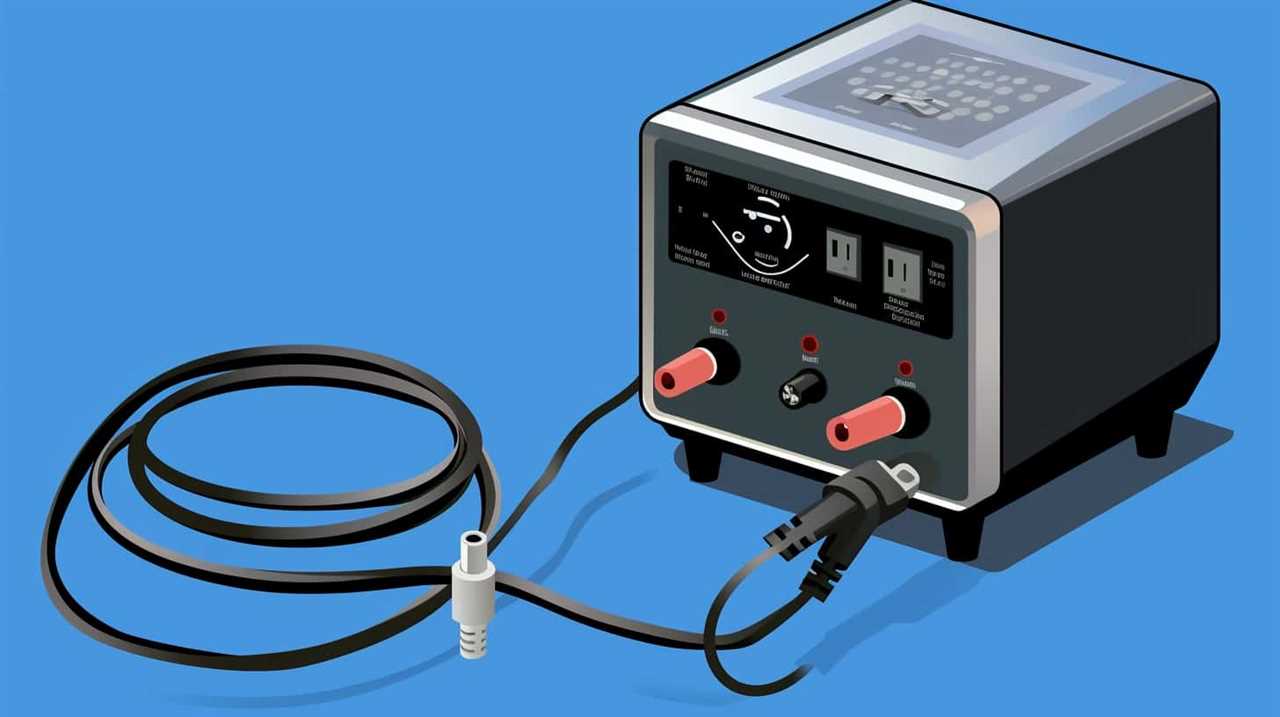
Firstly, it’s essential to check the power cord for any visible damage or fraying. If any damage is detected, it’s important to replace the power cord immediately to prevent any electrical hazards. Additionally, ensure that the power cord is securely plugged into a working electrical outlet.
Another common power supply problem can be a blown fuse. A blown fuse can occur due to power surges or overloading the microwave with too many appliances on the same circuit. To troubleshoot this issue, locate the fuse on the microwave and check for any signs of a blown fuse, such as a blackened or broken wire. If a blown fuse is found, replace it with a new one of the same rating.
Lastly, if the microwave still doesn’t receive power, it’s recommended to consult a professional technician. They’ll have the expertise to diagnose and repair any internal power supply issues that may be causing the malfunction.
Faulty Door Switches
When it comes to microwave issues, faulty door switches can pose significant safety and malfunction risks. These switches are responsible for ensuring that the microwave only operates when the door is securely closed. If the switches become faulty or worn out, they may fail to properly detect the door position, leading to potential accidents or damage to the microwave.

Regular maintenance, including checking and replacing faulty door switches, is crucial to ensure the safe and efficient operation of the microwave.
Safety and Malfunction Risks
We often encounter safety and malfunction risks in microwaves due to an issue with the door switches. The door switches play a crucial role in ensuring the microwave operates safely and efficiently.
Here are some important points to consider regarding safety precautions and troubleshooting tips:
- Make sure to always follow the manufacturer’s guidelines for safe usage of the microwave.
- Regularly inspect the door switches for any signs of damage or wear.
- If the microwave doesn’t start or stops working mid-cycle, the door switches could be the culprit.
- Troubleshoot the issue by checking if the switches are properly aligned and making solid contact when the door is closed.
Ensuring the proper functioning of door switches is essential for the overall safety and performance of the microwave. However, regular maintenance goes beyond just addressing faulty door switches.
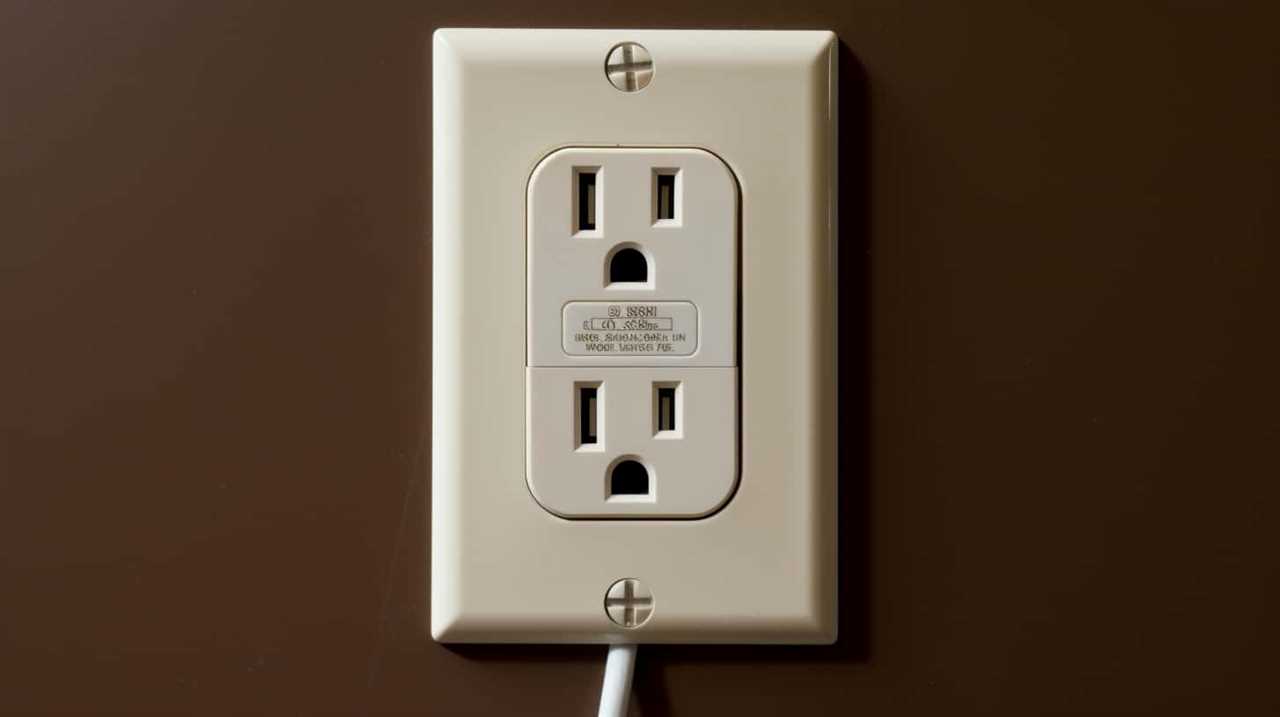
Let’s now delve into the importance of regular maintenance for microwaves.
Importance of Regular Maintenance
To ensure the overall safety and performance of our microwave, it’s imperative that we prioritize regular maintenance. This includes addressing the issue of faulty door switches. Regular maintenance, such as cleaning and inspecting the door switches, can help prevent potential hazards and extend the lifespan of the microwave.
Cleaning the switches regularly ensures that they’re free from dirt, grease, and debris, which can cause them to malfunction. By keeping them clean, we can reduce the risk of the switches failing and causing potential safety issues. It’s important to note that cleaning the switches should be done carefully and following the manufacturer’s instructions.
In addition to regular maintenance, professional maintenance has its benefits. Certified technicians have the expertise to identify and fix any potential issues before they escalate. They can ensure that the microwave operates at its optimal level and minimize the risk of faulty door switches and other common microwave problems.

Investing in regular professional maintenance is worth it to ensure the safe and efficient operation of our microwave. By scheduling regular maintenance checks, we can catch any problems early on and prevent them from becoming more serious issues.
Now, let’s move on to discussing the next topic: the defective magnetron.
Defective Magnetron
When it comes to common microwave issues, one of the main culprits is a defective magnetron. The magnetron is responsible for producing the microwave radiation that heats up your food, so any malfunction in this component can lead to problems.
Common magnetron issues include failure to generate heat or uneven heating, and these can be fixed by replacing the faulty magnetron with a new one.

Magnetron Malfunction Causes
Because of its crucial role in generating microwave radiation, a defective magnetron can be a leading cause of microwave malfunction. When a magnetron malfunctions, it can result in various issues that affect the performance of the microwave.
Here are four common causes of magnetron malfunction:
- Overheating: Excessive heat can cause the magnetron to fail, often due to poor ventilation or continuous usage without breaks.
- Filament damage: The filament inside the magnetron can break or burn out, preventing the proper generation of microwave radiation.
- Burnt antenna or waveguide: If the antenna or waveguide that directs the microwaves is damaged or burnt, it can affect the distribution of microwave energy.
- Power surge: Fluctuations in power supply can cause a magnetron to malfunction, leading to irregular microwave radiation output.
If you encounter any of these issues, it’s recommended to seek professional assistance for magnetron repair to ensure safe and efficient microwave operation.
Common Magnetron Problems
We often encounter common magnetron problems when our microwaves have a defective magnetron.

The magnetron is a crucial component responsible for generating the microwaves that heat our food.
One common issue is when the magnetron fails to produce heat or emits weak microwaves. This can be caused by a faulty filament or a damaged magnetron tube.
Another problem is when the magnetron sparks or produces unusual sounds, indicating an internal short circuit. This can result from overheating or a damaged waveguide cover.
Fixing magnetron issues requires troubleshooting the magnetron and identifying the specific problem. It’s crucial to ensure the microwave is unplugged and that proper safety precautions are followed.

Consulting a professional technician or contacting the manufacturer’s customer support can provide guidance in diagnosing and resolving magnetron problems effectively.
Fixing Faulty Magnetrons
To fix a faulty magnetron, we can employ various troubleshooting techniques and consult professionals or the manufacturer’s customer support for guidance.
When fixing magnetron problems, it’s important to follow these steps:
- Check the power supply: Ensure that the microwave is properly plugged in and receiving power. Test the outlet with another device to make sure it’s functioning correctly.
- Inspect the magnetron connections: Examine the magnetron for any loose or damaged connections. Tighten any loose connections or replace any damaged cables.
- Test the high voltage diode: Use a multimeter to check the high voltage diode for continuity. If it’s defective, replace it with a new one.
- Replace the magnetron: If all else fails, the magnetron itself may need to be replaced. Contact the manufacturer or a professional technician for assistance.
By addressing these troubleshooting steps, one can effectively address and fix magnetron problems.
Now, let’s move on to discussing the next common issue, a damaged control panel.
Damaged Control Panel
How can damaged control panels affect the performance of our microwaves?
The control panel is an essential component of a microwave oven, responsible for enabling users to set the desired time and power level for cooking. When the control panel becomes damaged, it can lead to a range of issues that impact the overall performance of the appliance.
A damaged control panel can cause a variety of problems, including buttons not responding or responding incorrectly, the display not working properly, or the microwave not starting at all. These issues can significantly hinder the functionality of the appliance, making it difficult for users to operate and control their microwave effectively.
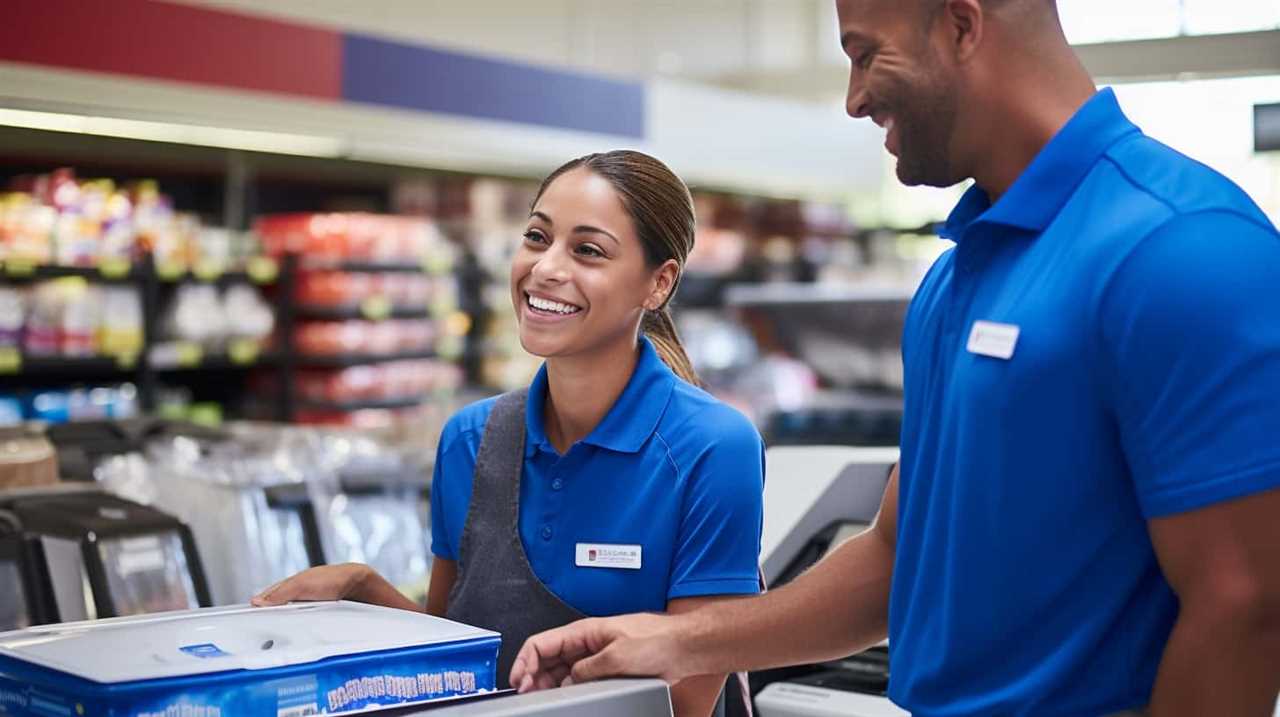
Furthermore, a damaged control panel can also lead to overheating issues. If the control panel isn’t functioning correctly, it may not regulate the microwave’s temperature properly, resulting in excessive heat buildup. This overheating can’t only damage the control panel further but also pose a potential safety risk, as it can potentially cause the microwave to catch fire or malfunction.
In the next section, we’ll explore the consequences of overheating issues in microwave ovens and discuss their potential causes and solutions.
Overheating Issues
Overheating problems can arise in microwave ovens due to various factors. It’s essential to understand these factors in order to fix and prevent overheating issues effectively.
Here are some common causes of overheating in microwaves:

- Blocked Ventilation: When the vents of a microwave oven are blocked, the heat produced during the cooking process can’t escape properly. This can lead to overheating. To fix this, ensure that the vents are clean and free from any obstructions.
- Faulty Cooling Fan: The cooling fan plays a crucial role in dissipating heat from the microwave’s internal components. If the fan is malfunctioning, it can result in overheating. To fix this, check the fan for any damage or obstruction and replace it if necessary.
- Excessive Use: Extended periods of continuous usage can cause the microwave to overheat. It’s important to give the appliance sufficient time to cool down between uses to prevent overheating.
- Inadequate Power Supply: Insufficient power supply can also contribute to overheating. Make sure the microwave is connected to a stable and appropriate power source to avoid this issue.
To prevent overheating issues in microwaves, regular maintenance is crucial. Clean the vents regularly, ensure the cooling fan is in good condition, and avoid overusing the appliance. Taking these precautions will help you enjoy safe and efficient microwave cooking.
Turntable Malfunctions
When it comes to turntable malfunctions in microwaves, there are two common issues that can occur.
The first is uneven cooking, where the food on the edges of the plate is cooked differently than the food in the center. This can be caused by a misalignment or a malfunctioning turntable motor.
The second issue is when the turntable fails to rotate at all, resulting in food that isn’t evenly heated. This can be caused by a faulty motor or a problem with the turntable’s drive coupler.

Uneven Cooking With Turntable
We often experience uneven cooking when the turntable in our microwave malfunctions. This can be frustrating, especially when we’re trying to prepare a meal quickly and efficiently. To avoid this issue, it’s important to follow proper microwave cooking techniques and tips.
Here are some key points to keep in mind:
- Ensure that the food is evenly distributed on the turntable. This will help promote even cooking throughout.
- Use microwave-safe dishes that allow for proper heat distribution. Avoid using metal or foil as they can cause hot spots.
- Stir or rotate the food halfway through the cooking process to ensure even heating.
- Adjust the power level if necessary. Lower power levels can help prevent overcooking or burning certain areas of the food.
By following these tips, you can minimize the chances of uneven cooking in your microwave.
Now, let’s move on to the next issue: turntable not rotating.

Turntable Not Rotating
To address the issue of the turntable not rotating, troubleshooting the microwave’s turntable malfunctions is essential.
When the turntable fails to rotate, it can greatly affect the efficiency and effectiveness of the microwave.
One common cause of this issue is a faulty turntable motor. This motor is responsible for rotating the turntable and ensuring even cooking. If the motor is defective or burnt out, it will need to be replaced.
Another possible cause of the turntable not rotating is a broken or worn-out turntable coupler. This component connects the motor to the turntable, allowing it to rotate. Checking the condition of the coupler and replacing it if necessary can help resolve the issue.
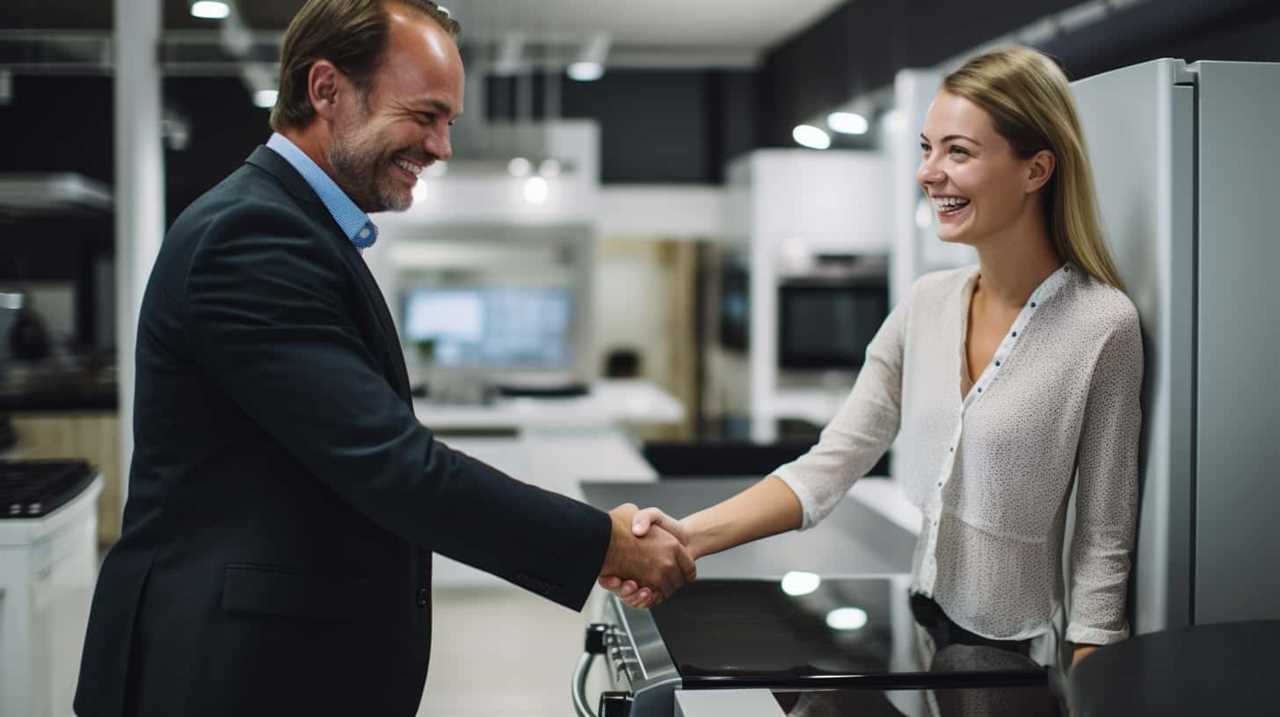
Regular turntable maintenance, such as cleaning and lubricating the components, can also prevent turntable malfunctions.
If troubleshooting these common issues doesn’t resolve the problem, it may be necessary to consult a professional technician for further assistance.
Inconsistent Heating
The main cause of inconsistent heating in microwaves is uneven distribution. When the power supply isn’t evenly distributed throughout the microwave cavity, certain areas receive more energy than others, resulting in uneven heating. This can be caused by a variety of factors, including power supply issues.
Here are four common reasons for inconsistent heating:
- Unevenly placed food: If the food isn’t arranged properly on the turntable or the microwave tray, some parts may be closer to the center where the energy is concentrated, while others are farther away.
- Lack of stirring or rotating: Certain dishes or liquids require stirring or rotating during the heating process to ensure even distribution of heat. Failure to do so can lead to cold spots and uneven heating.
- Improper container selection: Different containers have different heat-absorbing properties. Using containers that aren’t microwave-safe or have uneven heat distribution can result in inconsistent heating.
- Microwave malfunction: In some cases, the inconsistent heating may be due to a malfunctioning microwave. Issues with the magnetron, the component responsible for generating the microwaves, or other internal components can result in uneven power distribution.
To ensure consistent heating, it’s important to properly arrange the food, stir or rotate as necessary, use microwave-safe containers, and ensure the microwave is in good working condition.
Interior Light Failure
Interior light failure in microwaves can be caused by a faulty bulb or wiring issues. The interior light serves an important purpose in allowing users to monitor the cooking process without having to open the microwave door. When the interior light fails, it can be quite frustrating, but fortunately, troubleshooting and resolving this issue is relatively straightforward.
The first step in troubleshooting interior light failure is to check the bulb. Begin by unplugging the microwave and removing the bulb cover, which is usually located on the interior roof of the microwave. Carefully remove the old bulb and replace it with a new one of the same wattage and size. Once the new bulb is securely in place, plug the microwave back in and test the interior light to ensure it’s functioning properly.
If replacing the bulb doesn’t resolve the issue, the next step is to inspect the wiring. Faulty wiring can disrupt the flow of electricity to the interior light, causing it to fail. Carefully examine the wiring connections, checking for any loose or damaged wires. If any issues are found, they should be repaired or replaced by a qualified technician to ensure safety and proper functionality.

Broken Door Latch
When facing broken door latch issues in our microwave, it’s important to address the problem promptly and efficiently. The door latch is a crucial component that ensures the microwave operates safely and effectively.
Here are some key points to consider when fixing a broken latch and preventing latch issues in the future:
- Inspect the latch mechanism: Start by examining the latch and its surrounding components for any signs of damage or misalignment. Look for bent or broken parts and ensure that the latch engages properly with the door hooks.
- Replace faulty parts: If you identify any damaged or worn-out parts, such as the latch itself or the door hooks, it’s essential to replace them with compatible replacements. Consult the microwave’s user manual or contact the manufacturer for guidance on obtaining the correct parts.
- Clean and lubricate: Regularly cleaning the latch and its surrounding areas can prevent debris accumulation, which can hinder proper latch operation. Additionally, applying a small amount of food-grade lubricant to the latch mechanism can help maintain smooth movement.
- Handle the door with care: Avoid slamming the microwave door shut, as this can put unnecessary stress on the latch mechanism. Gently closing the door will help prevent latch damage and prolong its lifespan.
By following these steps and adopting proper microwave door handling techniques, you can effectively fix a broken latch and minimize the occurrence of latch issues in the future.
Now, let’s move on to the next section, where we’ll discuss another common microwave problem: faulty timers.
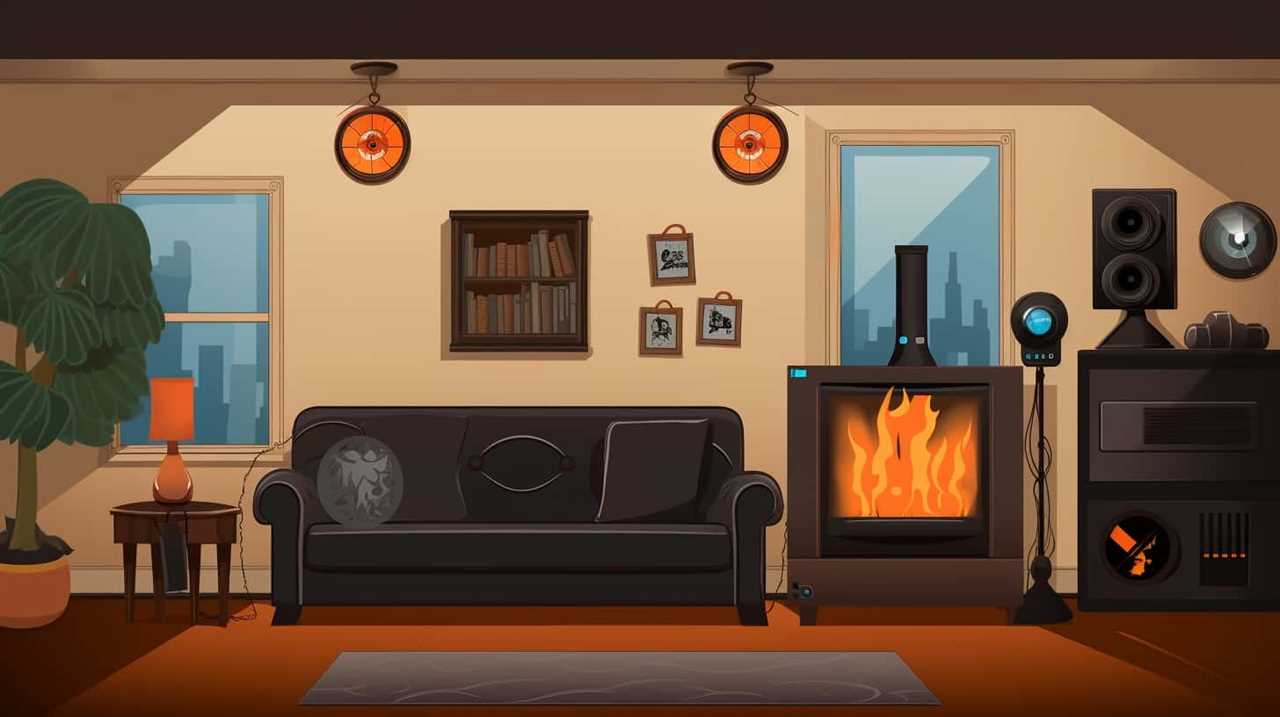
Faulty Timer
When it comes to microwave timers, malfunctions can be frustrating and disruptive. Understanding the common causes of faulty timers is crucial in troubleshooting and finding solutions.
In this section, we’ll explore the intricacies of timer malfunctions, delve into the potential reasons behind them, and provide valuable tips for troubleshooting microwave timers.
Timer Malfunctions Explained
Our microwave’s faulty timer was causing us a lot of frustration. We decided to delve into the issue and understand why timer malfunctions occur and how to fix them. Here are some key points to consider:
- Timer replacement: When the timer becomes unresponsive or inaccurate, replacing it’s often the most effective solution. Look for compatible replacement parts from reputable manufacturers.
- Timer repair: In some cases, the timer may not need to be replaced entirely. Simple repairs, such as fixing loose connections or replacing worn-out buttons, can restore its functionality.
- Power supply issues: Sometimes timer malfunctions can be traced back to problems with the power supply. Check the power outlet and ensure that it’s providing a stable and consistent flow of electricity.
- Control board problems: Faulty control boards can also cause timer malfunctions. If other troubleshooting methods fail, inspect the control board for any signs of damage or malfunctioning components.
Causes of Faulty Timers
One possible cause of faulty timers in microwaves is a lack of proper maintenance. Over time, dust, debris, and food particles can accumulate on the timer components, causing them to malfunction. Additionally, regular wear and tear can lead to worn-out or damaged timer parts, resulting in inaccurate timekeeping or complete timer failure.

Another common cause is electrical issues, such as power surges or faulty wiring, which can disrupt the timer’s functionality. Moreover, improper usage, such as forcefully turning the timer dial or repeatedly slamming the microwave door, can also contribute to timer malfunctions.
Understanding the causes of timer malfunctions is crucial for troubleshooting timer issues effectively. By identifying and addressing these underlying causes, users can ensure the proper functioning of their microwave timers and avoid unnecessary repairs or replacements.
Transitioning into the subsequent section about troubleshooting microwave timers, let’s explore some effective strategies to resolve these timer malfunctions.
Troubleshooting Microwave Timers
To troubleshoot a faulty timer in a microwave, we can start by checking for any loose connections or damaged wiring. Here are some steps to troubleshoot timer issues and delays:

- Ensure that the microwave is properly plugged into a functioning power outlet.
- Check the timer display for any error codes or messages that could indicate a specific problem.
- Reset the timer by unplugging the microwave for a few minutes and then plugging it back in.
- If the timer still malfunctions, consult the user manual for specific instructions on how to troubleshoot timer issues.
By following these troubleshooting steps, you can identify and resolve common timer problems in your microwave. However, if the issue persists, it may be necessary to contact a professional technician for further assistance.
Now, let’s move on to the next section about sparks or arcing.
Sparks or Arcing
Sparks or arcing can be a worrisome issue when using a microwave. Not only can it cause safety risks, but it can also damage the microwave itself. Arcing occurs when there’s a breakdown of air insulation between two conductive materials, resulting in a discharge of electricity in the form of sparks. This can happen when metal objects, such as aluminum foil or utensils, come into contact with the walls or interior of the microwave.
To fix arcing issues, it’s important to first identify the cause. Inspect the interior of the microwave for any metal objects or food residue that may be causing the arcing. Remove any foreign objects and clean the interior thoroughly. It’s also crucial to ensure that the microwave is being used properly, following the manufacturer’s instructions and guidelines. Avoid using metal containers, foil, or utensils inside the microwave.

If the arcing persists, it may indicate a more serious problem with the microwave’s electrical system. In such cases, it’s recommended to contact a qualified technician for repair or replacement. Remember, safety should always be the top priority when dealing with sparks or arcing in a microwave.
Abnormal Smells or Smoke
When sparks or arcing occur in a microwave, it not only poses safety risks and potential damage, but it can also result in abnormal smells or smoke. Abnormal smells or smoke coming from a microwave can be alarming, but understanding the potential hazards and knowing some troubleshooting tips can help address the issue effectively.
Here are some potential hazards associated with abnormal smells or smoke in a microwave:
- Fire risk: Smoke and abnormal smells indicate that there’s likely a fire or electrical issue within the microwave, which can lead to a dangerous situation.
- Health concerns: Inhaling the smoke or fumes emitted from a malfunctioning microwave can be harmful to your health, causing respiratory problems or other adverse effects.
- Damage to the microwave: Excessive smoke or abnormal smells may indicate that something is burning or melting inside the microwave, potentially causing damage to the internal components.
Here are some troubleshooting tips to address abnormal smells or smoke in a microwave:
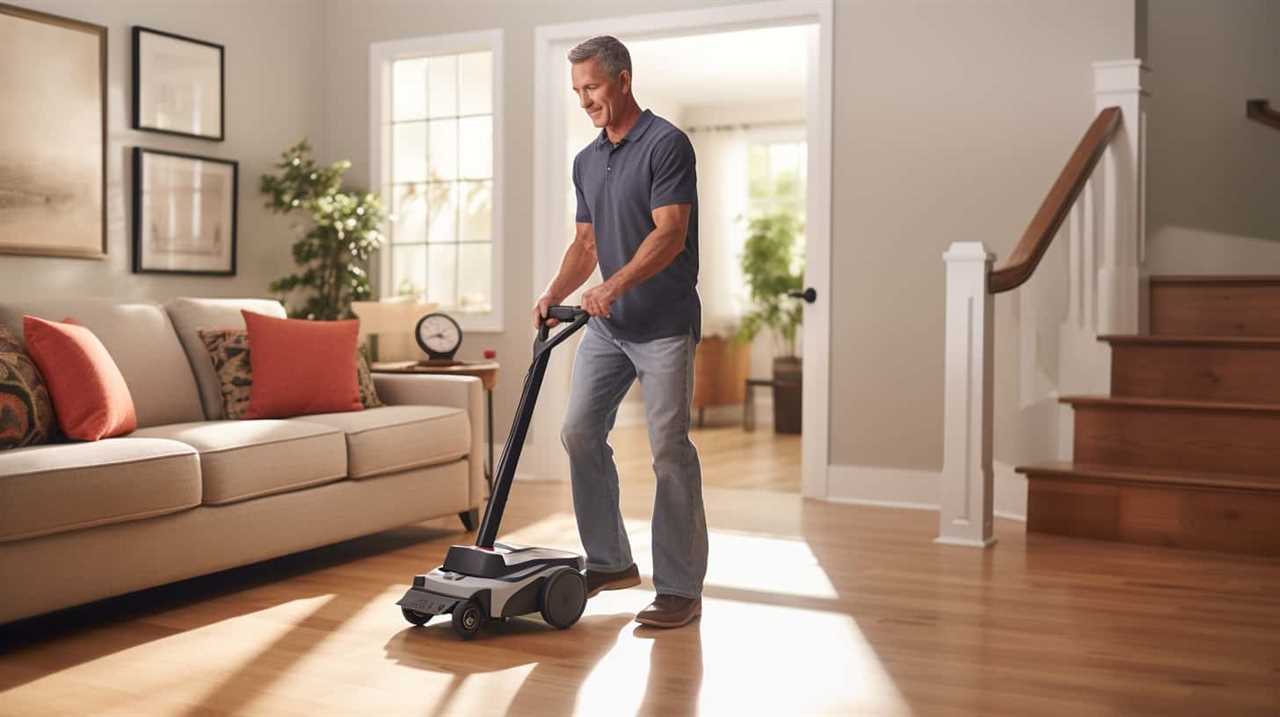
- Stop the microwave immediately: If you notice abnormal smells or smoke, it’s crucial to turn off the microwave and unplug it from the power source to prevent further damage or potential hazards.
- Check for any visible damage: Inspect the interior and exterior of the microwave for any visible signs of damage, such as burns, melted plastic, or loose connections.
- Clean the microwave thoroughly: Food debris or spilled liquids can cause smoke or abnormal smells when heated. Clean the interior of the microwave with a mild detergent or microwave-safe cleaner to remove any residue.
- Seek professional help: If the issue persists or you’re unsure about how to fix it, it’s recommended to seek assistance from a qualified technician to avoid any further damage or risks.
Loud or Strange Noises
We often hear loud or strange noises coming from our microwaves, which can indicate underlying issues. These noises can be concerning and may disrupt the smooth operation of the appliance.
One common problem that can cause loud or strange noises is uneven heating. When the microwave’s heating elements aren’t functioning properly, it can result in certain areas of the food being heated more than others. This can lead to uneven cooking and cause the food to emit strange noises as it heats unevenly.
To troubleshoot noise issues, it’s important to check the rotating plate or turntable inside the microwave. If it isn’t properly aligned or has become loose, it can cause rattling or grinding noises during operation. Additionally, inspect the microwave’s motor and fan. A malfunctioning motor or a loose fan can also generate loud or strange noises.
To address these issues, ensure that the rotating plate is properly aligned and securely in place. Tighten any loose screws or bolts that may be causing the noise. If the motor or fan is the source of the problem, it may be necessary to consult a professional technician for repairs or replacement.

In the subsequent section, we’ll discuss another common microwave issue: display or touchpad malfunctions.
Display or Touchpad Malfunctions
One common issue that can occur with microwaves is malfunctioning displays or touchpads. These components are crucial for setting the cooking time, temperature, and other functions of the microwave. When they malfunction, it can be frustrating and inconvenient.
Here are some common causes of display or touchpad malfunctions:
- Display calibration issues: Sometimes, the display may not show the correct information or may be difficult to read. This can be due to calibration problems, where the display isn’t aligned properly with the underlying components. Resetting the calibration or seeking professional help can resolve this issue.
- Touchpad sensitivity problems: If the touchpad is unresponsive or overly sensitive, it can make it challenging to input the desired settings. This can occur due to dirt or debris on the touchpad surface, electrical issues, or software glitches. Cleaning the touchpad, checking the connections, or updating the firmware may help address this problem.
- Electrical faults: Faulty wiring or power surges can also cause display or touchpad malfunctions. It’s essential to ensure that the microwave is properly grounded and connected to a stable power source to prevent such issues.
- Component failure: In some cases, the display or touchpad may malfunction due to internal component failure. This could be a result of wear and tear, manufacturing defects, or excessive usage. Repairing or replacing the faulty components may be necessary to restore functionality.
Frequently Asked Questions
How Can I Fix a Microwave That Is Not Heating Consistently?
We can fix a microwave that isn’t heating consistently by following a few steps.

First, check if the microwave sparks when turned on, as this could indicate a faulty magnetron.
Next, inspect the microwave door to ensure it closes properly, as an improper seal can cause inconsistent heating.
If these issues persist, it may be necessary to replace the magnetron or have a professional technician assess the appliance.
What Should I Do if My Microwave’s Turntable Is Not Rotating?
If your microwave’s turntable isn’t rotating, there are a few troubleshooting tips you can try.

First, make sure the turntable is properly positioned on its track.
If it still doesn’t rotate, check if the turntable motor is functioning properly. If it’s not, it may need to be replaced.
Additionally, check if there’s any debris or food particles obstructing the turntable’s movement.
Regular microwave maintenance can help prevent these issues from occurring.

Why Is My Microwave Making Loud or Strange Noises?
When our microwave starts making loud or strange noises, it can be concerning. To troubleshoot this issue, we need to understand the possible causes.
It could be due to a problem with the turntable or the motor that rotates it. Another possible cause is a malfunctioning magnetron, which is responsible for heating the food.
How Can I Fix a Microwave With a Malfunctioning Display or Touchpad?
When it comes to microwave repair, troubleshooting the touchpad can be a common issue. If your microwave has a malfunctioning display or touchpad, there are a few steps you can take to try and fix it.
First, ensure that the microwave is unplugged before attempting any repairs.

Next, carefully remove the control panel and inspect the touchpad for any signs of damage or loose connections.
If necessary, replace the touchpad with a new one.
Remember to always refer to the manufacturer’s instructions for specific guidance.
What Are the Possible Causes of Abnormal Smells or Smoke Coming From My Microwave?
When it comes to microwave issues, abnormal smells or smoke can be a cause for concern. There are several possible causes for these problems, including food spills or splatters inside the microwave, burning or overheating of food, malfunctioning components, or even electrical issues.

To troubleshoot microwave odor or smoke, it’s important to take the following steps:
- Thoroughly clean the interior of the microwave. Food spills or splatters can accumulate over time and cause unpleasant odors or even smoke when the microwave is used. Use a mild detergent and warm water to wipe down the interior surfaces, paying special attention to any areas where food may have spilled or splattered.
- Avoid overheating or burning food. Overheating or burning food can release strong odors and potentially cause smoke. Be sure to follow the recommended cooking times and power levels for the food you are preparing. If you notice any signs of burning or overheating, stop the microwave immediately and remove the food.
- Check for malfunctioning components. Malfunctioning components, such as a faulty fan or heating element, can also contribute to unusual smells or smoke. If you suspect a component may be malfunctioning, it is best to contact a professional for repair or replacement.
- Ensure that all electrical connections are secure. In some cases, electrical issues can cause abnormal smells or smoke. Check that the microwave is properly plugged in and that the power cord is in good condition. If you notice any frayed wires or loose connections, it is important to have them repaired by a qualified electrician.
Conclusion
In conclusion, it is crucial to address common microwave issues promptly to ensure optimal performance and safety.
By understanding the possible causes, such as power supply problems, faulty door switches, defective magnetron, damaged control panel, overheating issues, sparks or arcing, abnormal smells or smoke, loud or strange noises, and display or touchpad malfunctions, users can take necessary measures to resolve these issues.
Remember, neglecting these problems can lead to inconvenient breakdowns and potential hazards.

So, don’t wait, address these issues promptly and keep your microwave functioning at its best!








